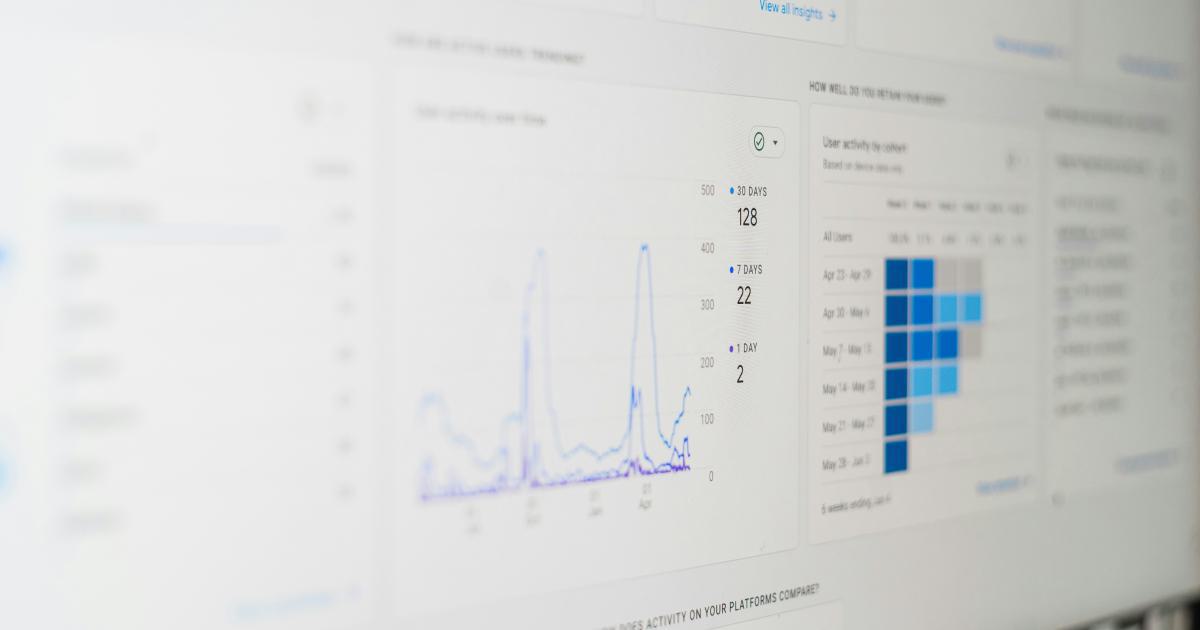9 Surefire Ways to Boost Content Marketing Tracking

Introduction: The Importance of Effective Content Marketing Tracking
In the ever-evolving digital landscape, content marketing has become a crucial component of any successful business strategy. By creating and sharing valuable, relevant, and consistent content, organizations can attract and engage their target audience, ultimately driving conversions and building long-term brand loyalty. However, the true power of content marketing lies in the ability to effectively track and measure its performance.
Content marketing tracking is the process of monitoring and analyzing the performance of your content efforts, allowing you to make data-driven decisions, optimize your strategies, and maximize the return on your investment. Without a comprehensive tracking system in place, it becomes challenging to understand the impact of your content, identify areas for improvement, and demonstrate the value of your content marketing initiatives to stakeholders.
In this in-depth article, we'll explore 9 surefire ways to boost your content marketing tracking efforts, equipping you with the knowledge and tools necessary to navigate the complex world of content performance measurement and drive your business forward.
Understanding the Importance of Content Marketing Tracking
Before we dive into the specific strategies, it's essential to understand why effective content marketing tracking is so crucial for businesses of all sizes.
Measuring Content Performance
The primary benefit of content marketing tracking is the ability to measure the performance of your content. By tracking key metrics such as website traffic, engagement rates, conversions, and lead generation, you can determine which content resonates most with your audience and identify areas for improvement.
Optimizing Content Strategies
Armed with data-driven insights, you can optimize your content strategies to better align with your target audience's needs and preferences. This allows you to fine-tune your content creation, distribution, and promotion efforts, ensuring that you're investing your resources in the most effective and efficient ways.
Demonstrating ROI
Effective content marketing tracking enables you to demonstrate the return on investment (ROI) of your content efforts. By tracking the impact of your content on crucial business metrics, such as lead generation, sales, and customer retention, you can provide tangible evidence of the value your content marketing initiatives are delivering.
Informing Future Decisions
The insights gained from content marketing tracking can inform future decisions and guide the development of your overall content strategy. By understanding what works and what doesn't, you can make more informed decisions about the types of content to create, the channels to use, and the messaging that resonates with your audience.
9 Surefire Ways to Boost Content Marketing Tracking
Now that we've established the importance of content marketing tracking, let's dive into the 9 surefire ways to boost your tracking efforts:
1. Establish Clear Goals and Key Performance Indicators (KPIs)
The foundation of effective content marketing tracking is the establishment of clear goals and key performance indicators (KPIs). Before you begin tracking your content's performance, it's essential to define what success looks like for your organization. This could include objectives such as:
- Increasing website traffic
- Generating more qualified leads
- Improving engagement rates (e.g., time on site, social media shares)
- Driving more conversions (e.g., email sign-ups, product purchases)
- Enhancing brand awareness and reputation
Once you've identified your goals, you can then determine the appropriate KPIs to measure your progress. Common content marketing KPIs include:
- Pageviews: The number of times a web page is viewed
- Unique Visitors: The number of individual users who visit your website
- Bounce Rate: The percentage of visitors who leave your website after viewing only one page
- Average Time on Page: The average amount of time visitors spend on a particular page
- Conversion Rate: The percentage of visitors who complete a desired action (e.g., make a purchase, sign up for a newsletter)
- Social Shares: The number of times your content is shared on social media platforms
By clearly defining your goals and aligning your KPIs accordingly, you can ensure that your content marketing tracking efforts are focused and meaningful.

2. Implement Comprehensive Analytics Tracking
To effectively track the performance of your content, you'll need to implement a comprehensive analytics solution, such as Google Analytics, Adobe Analytics, or a specialized content marketing analytics platform. These tools provide a wealth of data and insights that can help you understand your audience's behavior and the impact of your content.
When setting up your analytics tracking, be sure to:
- Track All Relevant Metrics: Ensure that you're capturing data on all the KPIs you've identified, from pageviews and bounce rates to conversions and social engagement.
- Configure Goal Tracking: Set up goal tracking to measure the specific actions you want your audience to take, such as completing a contact form or making a purchase.
- Implement Event Tracking: Use event tracking to capture user interactions with your content, such as video plays, document downloads, or form submissions.
- Integrate with Other Tools: Seamlessly integrate your analytics platform with other marketing tools, such as your content management system (CMS), email service provider, and social media platforms, to get a comprehensive view of your content's performance.
By implementing a robust analytics solution, you'll be able to generate detailed reports, visualize data, and gain the insights needed to make informed decisions about your content marketing efforts.

3. Leverage Audience Segmentation
Audience segmentation is a powerful technique that allows you to break down your audience into distinct groups based on shared characteristics, behaviors, or preferences. By segmenting your audience, you can gain a deeper understanding of how different groups engage with your content and tailor your strategies accordingly.
Some effective ways to segment your audience include:
- Demographic Factors: Age, gender, location, income level, job title, etc.
- Psychographic Factors: Interests, values, lifestyle, attitudes, and behaviors
- Behavioral Factors: Engagement levels, content preferences, purchase history, etc.
- Channel-Specific Factors: How users interact with your content across different platforms, such as social media, email, or your website
By analyzing the performance of your content across different audience segments, you can:
- Identify High-Performing Content: Discover which types of content resonate most with specific audience groups, allowing you to replicate and scale your successes.
- Personalize Content Experiences: Tailor your content to the unique needs and preferences of each audience segment, enhancing relevance and engagement.
- Optimize Targeting and Distribution: Allocate your resources more effectively by focusing your content creation and promotion efforts on the segments that are most likely to convert.
Effective audience segmentation is a key component of successful content marketing tracking, enabling you to make data-driven decisions and maximize the impact of your content.

4. Leverage Attribution Modeling
Attribution modeling is the process of determining which touchpoints or marketing channels deserve credit for a conversion or desired action. This is particularly important in content marketing, where the customer journey often involves multiple interactions with your content before a conversion occurs.
By implementing an attribution model, you can gain a more accurate understanding of the role your content plays in the overall customer journey and allocate your resources accordingly. Some common attribution models include:
- Last-Click Attribution: Assigns all the credit to the last interaction or touchpoint before the conversion.
- First-Click Attribution: Gives all the credit to the first interaction or touchpoint that led to the conversion.
- Linear Attribution: Distributes the credit equally across all touchpoints in the customer journey.
- Time-Decay Attribution: Assigns more credit to touchpoints that occurred closer to the conversion.
- Position-Based Attribution: Allocates a higher percentage of credit to the first and last touchpoints, with less credit given to the middle interactions.
Choosing the right attribution model for your business will depend on your specific goals and the complexity of your customer journey. By leveraging attribution modeling, you can better understand the impact of your content marketing efforts and make more informed decisions about where to focus your resources.

5. Utilize Heatmaps and User Recordings
Heatmaps and user recordings are powerful tools that can provide valuable insights into how your audience interacts with your content on a granular level.
Heatmaps are visual representations that show where users are clicking, scrolling, and focusing their attention on a web page. By analyzing heatmap data, you can:
- Identify Content Engagement: Determine which sections of your content are capturing the most attention and which areas are being overlooked.
- Optimize Page Layout: Restructure your content and design to better highlight the most important information and calls-to-action.
- Enhance User Experience: Make informed decisions about the placement of key elements, such as forms, buttons, and multimedia content, to improve the overall user experience.
User recordings, on the other hand, capture the actual user sessions, allowing you to observe how individuals navigate and interact with your content. By reviewing these recordings, you can:
- Understand User Behavior: Gain insights into how users are consuming your content, identifying pain points, and uncovering usability issues.
- Identify Conversion Obstacles: Detect and address any barriers or frictions that are preventing users from completing desired actions.
- Personalize Content Experiences: Use the insights from user recordings to tailor your content and user experience to the specific needs and preferences of your audience.
Tools like Hotjar, Crazy Egg, and UserTesting offer comprehensive heatmap and user recording solutions that can be integrated into your content marketing tracking arsenal.

6. Implement Advanced Content Analytics
Advanced content analytics go beyond the basic metrics provided by standard web analytics tools, allowing you to gain deeper insights into the performance and impact of your content.
Some examples of advanced content analytics include:
- Content Engagement Scoring: Analyze user engagement metrics, such as time spent on page, scroll depth, and interaction with specific content elements, to assign a score that reflects the level of engagement for each piece of content.
- Content Conversion Tracking: Track the specific actions users take after engaging with your content, such as filling out a form, making a purchase, or signing up for a subscription.
- Content Effectiveness Analysis: Evaluate the impact of your content on key business metrics, such as lead generation, customer acquisition, and revenue, to determine its overall effectiveness.
- Content Sentiment Analysis: Use natural language processing (NLP) techniques to analyze the sentiment expressed by your audience in response to your content, identifying positive, negative, or neutral reactions.
- Content Topic Clustering: Group your content based on thematic similarities, allowing you to identify popular topics, content gaps, and opportunities for cross-promotion.
By leveraging advanced content analytics, you can gain a more comprehensive understanding of your content's performance and make more informed decisions about your content strategy.

7. Incorporate Qualitative Feedback
While quantitative data from analytics tools is essential for tracking content performance, qualitative feedback from your audience can provide valuable context and insights that enhance your understanding of your content's impact.
Some effective ways to gather qualitative feedback include:
- Customer Surveys: Conduct surveys to gather direct feedback from your audience on the relevance, usefulness, and overall satisfaction with your content.
- Social Media Engagement: Monitor and analyze the comments, shares, and discussions around your content on social media platforms to gauge audience sentiment.
- User Interviews: Conduct in-depth interviews with a sample of your target audience to understand their content preferences, pain points, and overall experience.
- Customer Support Interactions: Review the feedback and questions received through your customer support channels, as they can reveal pain points and content gaps.
- Online Reviews: Analyze the reviews and ratings of your content, products, or services to identify areas for improvement and content that is resonating with your audience.
By incorporating qualitative feedback into your content marketing tracking efforts, you can gain a more well-rounded understanding of your audience's needs and preferences, allowing you to create more impactful and engaging content.

8. Leverage Competitive Analysis
Competitive analysis is a crucial component of content marketing tracking, as it allows you to benchmark your performance against your industry peers and identify opportunities for differentiation.
When conducting a competitive analysis, consider the following:
- Competitor Content Audit: Identify the types of content your competitors are producing, the topics they're covering, and the platforms they're using to distribute their content.
- Competitive Content Performance: Analyze the performance of your competitors' content, such as pageviews, engagement rates, and social shares, to understand what's resonating with their audience.
- Content Gap Analysis: Identify areas where your competitors may be underperforming or neglecting, presenting opportunities for you to create more valuable and differentiated content.
- Influencer and Thought Leader Analysis: Assess the content and influence of industry thought leaders and influencers, and consider opportunities for collaboration or content co-creation.
By conducting a thorough competitive analysis, you can gain valuable insights into industry best practices, content trends, and potential areas of opportunity, allowing you to optimize your content marketing strategies and stay ahead of the competition.

9. Continuously Iterate and Improve
Finally, effective content marketing tracking is an ongoing process that requires continuous iteration and improvement. As you gather data and insights from your various tracking efforts, it's essential to regularly review and refine your strategies to ensure that you're consistently delivering high-performing content.
Some key steps to continuously improve your content marketing tracking include:
- Regularly Review and Analyze Data: Set aside dedicated time to review your analytics reports, identify trends, and assess the performance of your content across different metrics and audience segments.
- Test and Experiment: Implement A/B testing, content experiments, and other data-driven experimentation to continuously optimize your content, messaging, and distribution channels.
- Gather Feedback and Adapt: Incorporate the feedback and insights you've gathered from your audience, customer support interactions, and competitive analysis to refine your content strategies.
- Adjust Goals and KPIs: Regularly review and update your goals and KPIs to ensure they align with your evolving business objectives and customer needs.
- Automate and Streamline Tracking: Leverage tools and integrations to automate your content marketing tracking processes, freeing up time for strategic analysis and decision-making.
By embracing a culture of continuous improvement, you can ensure that your content marketing tracking efforts remain agile, responsive, and aligned with the ever-changing needs of your target audience.

Conclusion: Unlocking the Power of Content Marketing Tracking
Effective content marketing tracking is the key to unlocking the full potential of your content marketing efforts. By implementing the strategies outlined in this article, you can gain a comprehensive understanding of your content's performance, make data-driven decisions, and optimize your strategies to drive tangible business results.
Remember, content marketing tracking is an ongoing process that requires dedication, experimentation, and a willingness to adapt to the ever-changing digital landscape. By continuously refining your tracking methods and incorporating the insights you gather, you can position your organization for long-term success in the content marketing arena.
So, what are you waiting for? Start leveraging these 9 surefire ways to boost your content marketing tracking and take your content marketing efforts to new heights.
Further Reading
- The Ultimate Guide to Content Marketing Analytics
- 7 Effective Content Marketing Metrics to Measure Success
- How to Use Google Analytics for Content Marketing Optimization
- The Best Content Marketing Attribution Models Explained
- How to Use Heatmaps to Improve Your Content Marketing